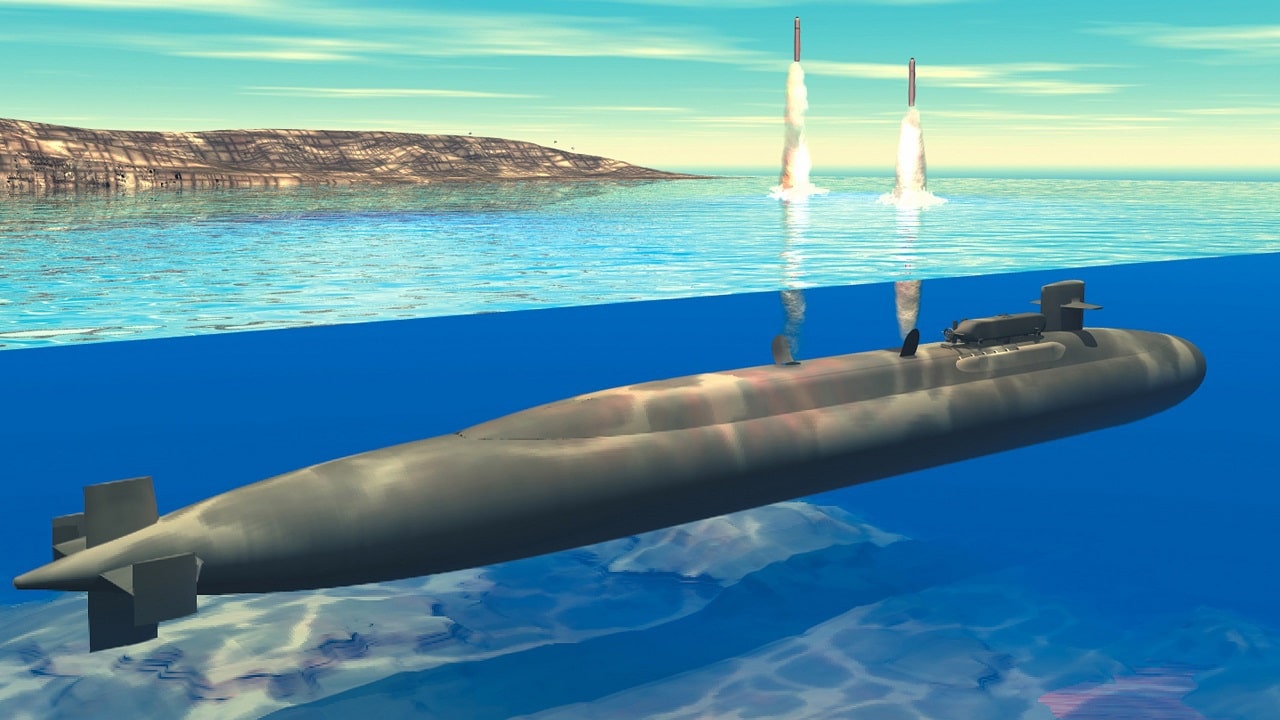While the Ohio-class submarines are children of the Cold War – and built to destroy the Soviet Union in a nuclear war – these ballistic missiles submarines now are tasked with deterring China and Russia. When the USS Ohio (SSBN-726) was commissioned in 1981, the nuclear ballistic submarine was heralded by then-Vice President George H.W. Bush as providing “a new dimension in our nation’s strategic deterrence.” The submarine, which had been laid down five years earlier, was the first in a new class of eighteen nuclear-powered SSBNs built for the United States Navy.
The first eight boats were delivered with Trident C4 missiles, while the fourteen to follow were armed with the longer-range Trident D5 – a weapon that has been touted as being as accurate as ground-based ICBMs, and with the same response time and greater destructive effect.
Major Leap Forward
The Ohio-class has been seen as a major improvement over the previous Lafayette-class SSBNs, and the boats were faster, quieter, and easier to maintain. The crew facilities were also enhanced, and included two onboard libraries and other amenities.
Until the deployment of the Soviet Union’s mighty Typhoon-class, the Ohio was the largest submarine in the world. The U.S. Navy’s boats displaced 16,764 tons, were 560 feet (170 meters) in length, and were 42 feet (13 meters) at the beam.
Made in Connecticut
The Ohio-class submarines were constructed between 1981 and 1997 by the Groton, Connecticut-based Electric Boat Division of General Dynamics. The U.S. Navy’s submarines of the Pacific Fleet are currently based at Bangor, Washington, while those of the Atlantic Fleet are based at King’s Bay, Georgia. The SSBNs were also developed to operate for fifteen years or longer between overhauls.
Doing More With Fewer Submarines
As each Ohio-class was able to carry twenty-four Trident missiles, compared to the sixteen carried by a Lafayette, the United States Navy was able to replace thirty-one of the former boats with just eighteen Ohio-class subs. Because there are fewer subs, the Navy works hard to ensure that each is at sea as much as possible.
During deployment, the submarines spend approximately seventy days at sea followed by twenty-five days in the dock for overhaul. Each of the SSBNs spends at least sixty-six percent of the time at sea.
To reduce the time in port for crew turnover and replenishment the submarines were built with three large logistics hatches – and these provide large diameter supply and repair openings. The hatches allow the sailors to rapidly transfer supply pallets, equipment replacement modules, and other machinery components quickly.
Two Crews
Each of the SSBNs has two crews – “Blue” and “Gold” – which alternate manning the boats while on patrol. The two sets of crews each consists of fifteen officers, including its own captain, and one hundred forty four enlisted sailors. This further maximizes the SSBN’s strategic availability, while reducing the number of boats that are required to meet the strategic requirements and yet allow for proper crew training, readiness and morale.
Under Pressure
The Ohio-class submarines feature a streamlined outer hull that enables the boat to move silently through the water at high speed, while the interior pressure hull provides an area that is large enough to accommodate the weapons, crew and equipment.
Each of the submarines are powered by a GE S8G pressure water reactor with two turbines that provide 45 MW (60,000 shp), which drive a single shaft. The boats are able to maintain a top speed of 18 knots when surfaced and 25 knots submerged.
The Ohio-class was also designed with four 533mm (21-inch) torpedo tubs with a Mk 118 digital torpedo fire control systems, and armed with Gould Mk 48s, a heavyweight weapon with a 640 pound (290 kg) warhead.
The boats were also designed to carry an advanced sonar suite that included the IBM BQQ 6 passive search sonar, Raytheon BQS 13, BQS 15 active and passive high-frequency sonar, and an active Raytheon BQR 19 navigation sonar.
Start-Up
In accordance with the Strategic Arms Reduction Treaty (START II), which was agreed in June 1992, the number of U.S. Navy strategic missile submarines was limited to fourteen beginning in 2002. Four of the boats of the Ohio-class – including the lead boat – were converted to conventionally-armed nuclear-powered (SSGNs) submarines.
USS Ohio began the conversion in November 2002 and rejoined the fleet in January 2006, following her sea trials. The other converted boats of the class included USS Michigan (SSGN-727), USS Florida (SSGN-728) and USS Georgia (SSGN-729).
Sticking Around
Despite entering service in the Reagan era, the Ohio-class remains a crucial component of the United States nuclear deterrent triad.
In November 2020, the U.S. Navy announced that it was looking at extending the lives of the Ohio-class submarines again – beyond the now 42-year planned life for the SSBNs – to add a little more capability for combatant commanders and a little more cushion in case of delays fielding their replacement.
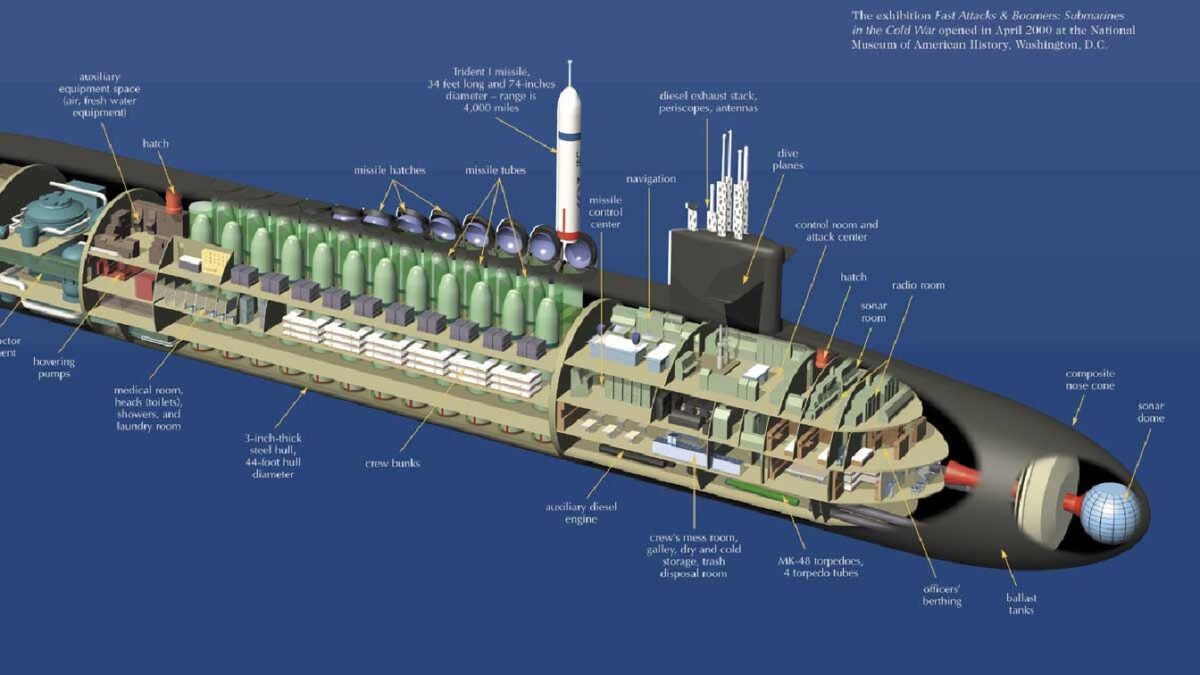
Ohio-Class SSBN. Image Credit: U.S. Government.
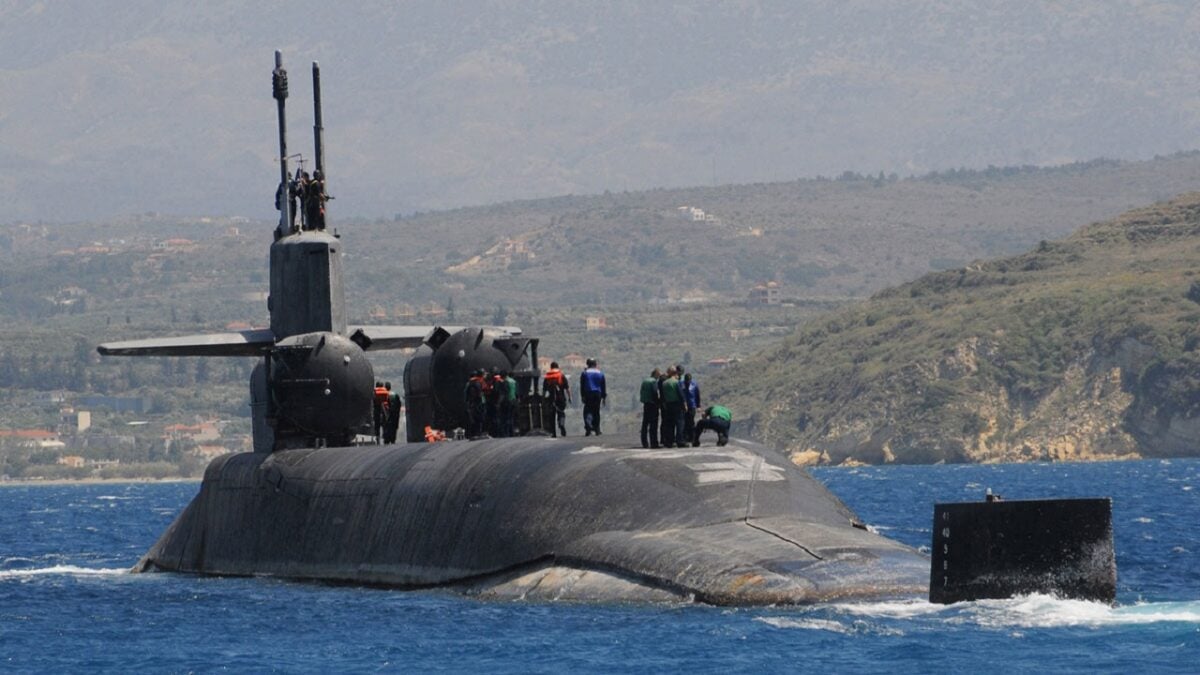
Ohio-Class SSGN. Image Credit: U.S. Navy.
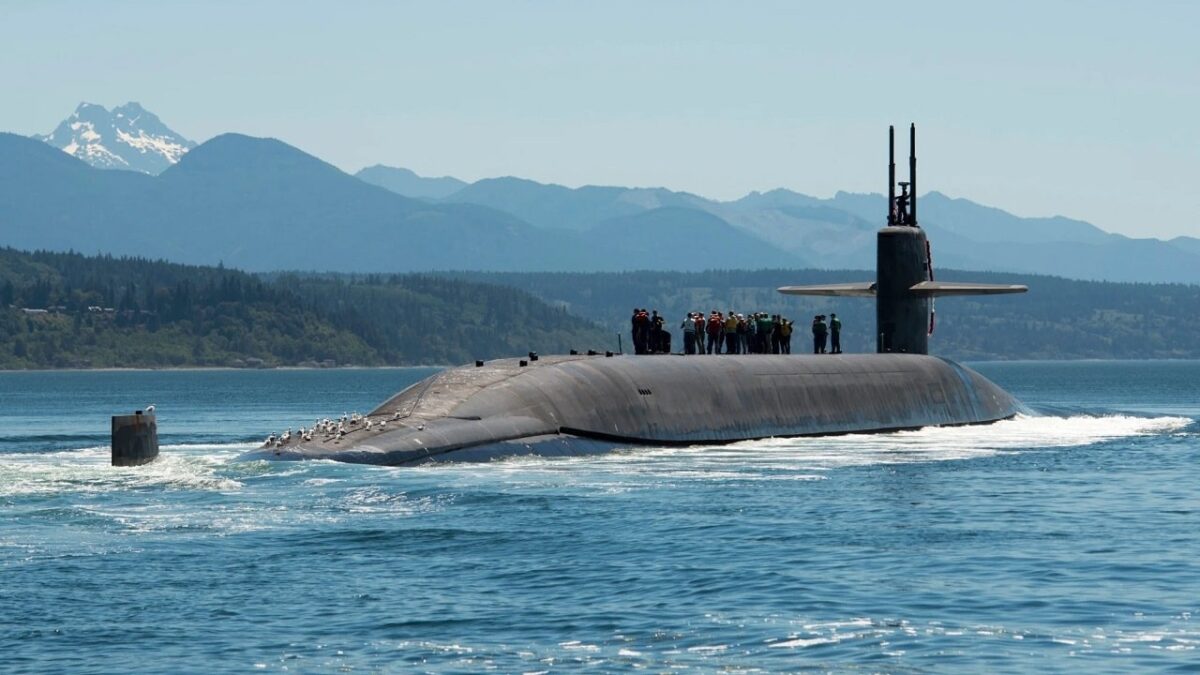
Ohio-Class. Image Credit: U.S. Navy.
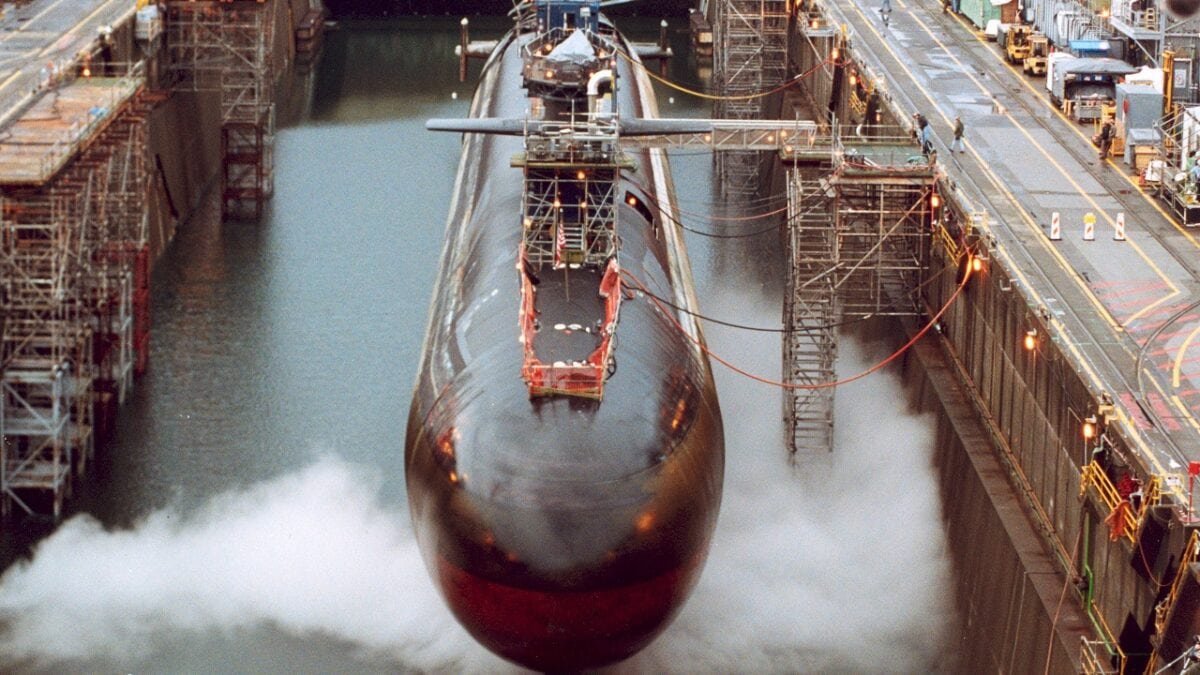
Puget Sound Naval Shipyard, Wash. (Aug. 14, 2003) — USS Ohio (SSGN 726) is in dry dock undergoing a conversion from a Ballistic Missile Submarine (SSBN) to a Guided Missile Submarine (SSGN) designation. Ohio has been out of service since Oct. 29, 2002 for conversion to SSGN at Puget Sound Naval Shipyard. Four Ohio-class strategic missile submarines, USS Ohio (SSBN 726), USS Michigan (SSBN 727) USS Florida (SSBN 728), and USS Georgia (SSBN 729) have been selected for transformation into a new platform, designated SSGN. The SSGNs will have the capability to support and launch up to 154 Tomahawk missiles, a significant increase in capacity compared to other platforms. The 22 missile tubes also will provide the capability to carry other payloads, such as unmanned underwater vehicles (UUVs), unmanned aerial vehicles (UAVs) and Special Forces equipment. This new platform will also have the capability to carry and support more than 66 Navy SEALs (Sea, Air and Land) and insert them clandestinely into potential conflict areas. U.S. Navy file photo. (RELEASED)
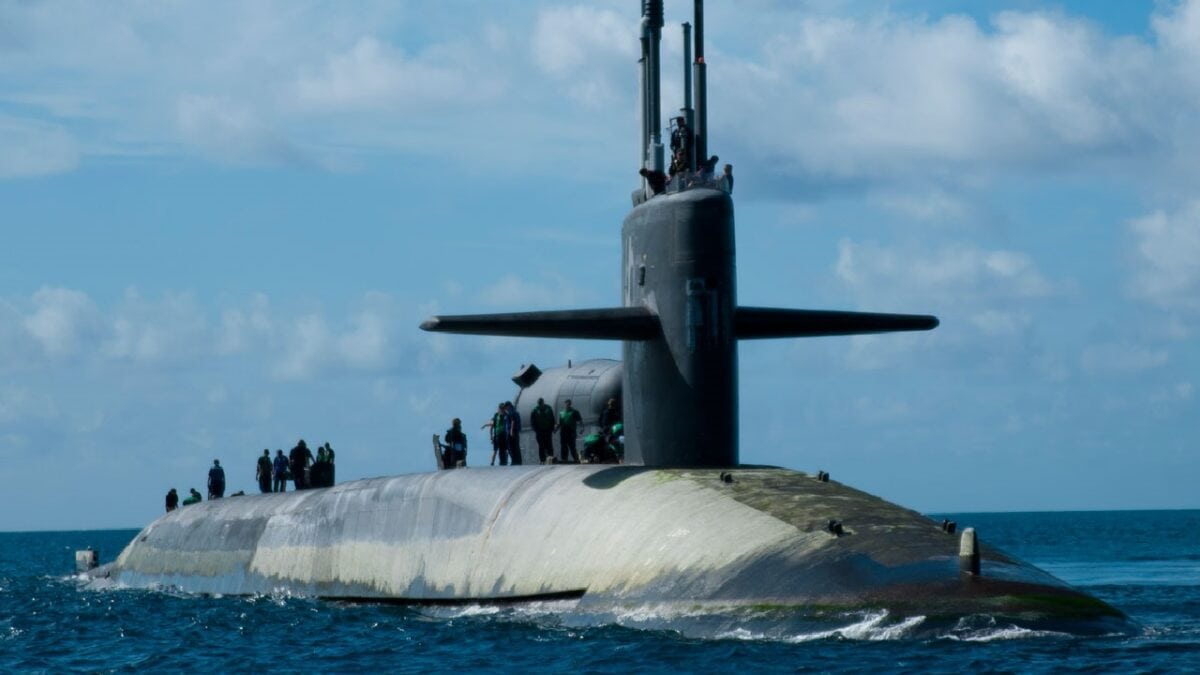
Ohio-class submarine. Image Credit: Creative Commons.
MORE: World War III – Where Could It Start?
MORE: A U.S.-China War Over Taiwan Would Be Bloody
Now a Senior Editor for 1945, Peter Suciu is a Michigan-based writer who has contributed to more than four dozen magazines, newspapers and websites. He regularly writes about military hardware, and is the author of several books on military headgear including A Gallery of Military Headdress, which is available on Amazon.com. Peter is also a Contributing Writer for Forbes.

